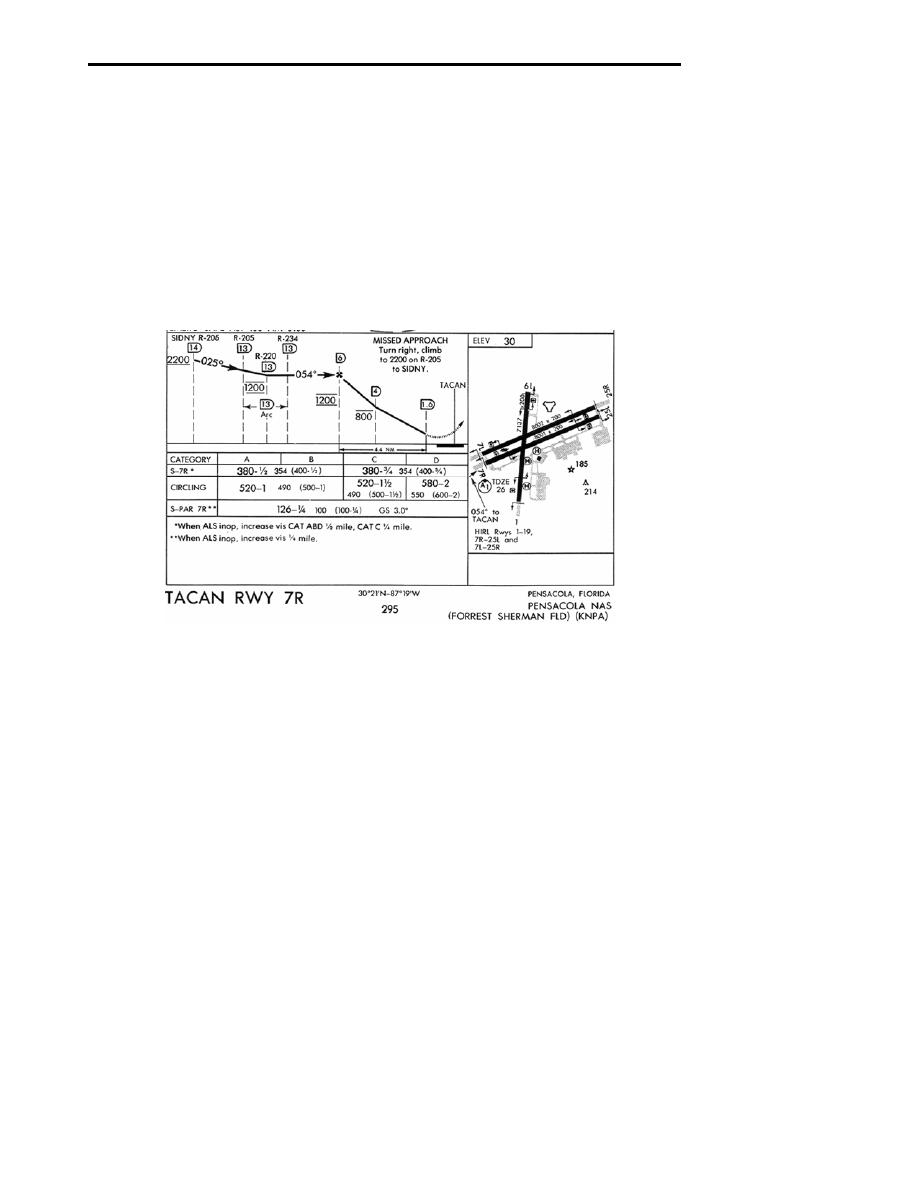 |
|||
|
|
|||
|
|
|||
| ||||||||||
|
|  INSTRUMENTS FLIGHT PLANNING
CHAPTER SEVEN
5. When filing flight plans to a destination lacking a published approach that is compatible
with operable aircraft navigation equipment, pilots shall ensure an alternate is selected that will
permit execution of a published approach and landing in the event of lost radio communications.
6.
An alternate airfield is not required when the weather at the destination is forecast to be
equal to or better than 3000 feet ceiling and 3 statute miles visibility during the period one hour
before or one hour after ETA. Otherwise, an alternate field is required. The weather minima in
parenthesis at the bottom of the approach plate are used for the filing of flight plans and the
commencement of instrument approaches. In the case of single-piloted aircraft, absolute
minimum weather is 200 feet ceiling and statute mile visibility. They must be adjusted so that
ceiling is at least 200 feet and visibility is mile. In Figure 7-2, we add 100 feet to the PAR
ceiling and mile to the PAR visibility to ensure that they meet single-piloted minimums of 200
feet mile.
Figure 7-2 TACAN RWY 7R
7.
Utilizing the following reference chart (Figure 7-3), we can easily determine the weather
needed when choosing an alternate airfield. We can see that in the case where our destination
has a 3000 foot ceiling and 3 miles visibility, or better, within one hour before and one hour after
our ETA, we do not need an alternate airfield. However, at VT-10/4, we have an alternate
airfield every time we fly a mission. If our destination weather is 0 0, up to, but not including
published weather minimums, our alternate has to have a 3000 foot ceiling and a minimum of 3
miles visibility. If the weather at our destination is above the minimums for the runway in use
(this includes PAR minimums adjusted for single-piloted aircraft), but below a 3000 foot ceiling
and/or 3 miles visibility, we determine our alternate by adding 300 feet and 1 mile to that
airfield's lowest non-precision (LOC/VOR/TACAN) weather minimums. We now compare this
adjusted weather minimum to our alternate airfield's forecast weather. If the forecast weather is
at or above these adjusted minima plus or minus one hour of our alternate ETA, we can use it as
an alternate.
IN-FLIGHT WEATHER ANALYSIS 7-9
|
|
Privacy Statement - Press Release - Copyright Information. - Contact Us |